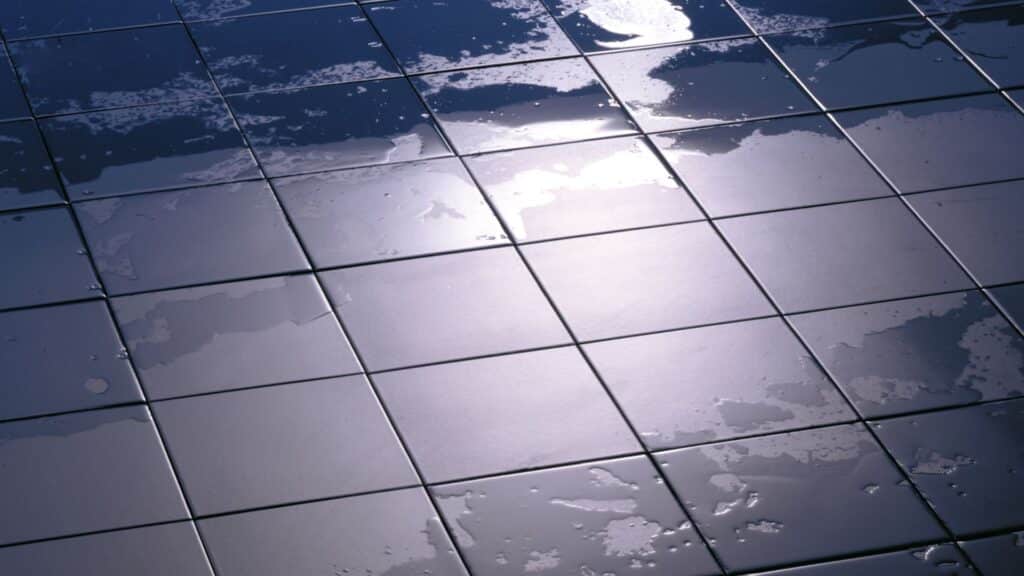Need a Plumber?
Need an emergency plumber in Calgary? Speak to a technician immediately:

Kitec In-Floor Heating Replacement in Calgary
If your Calgary home was built or renovated between the mid-1990s and late 2000s and has in-floor radiant heating, there’s a strong chance it could contain Kitec plumbing. This material was once marketed as a flexible, affordable option for radiant heat and domestic water lines, but thousands of homeowners across North America have since discovered the risks—especially when Kitec piping is buried beneath concrete or flooring.
When kitec pipe fails, the result is often sudden and severe. Leaks inside slabs, damaged flooring, mould growth, and expensive repairs are common outcomes. Many insurance companies now refuse to cover homes with active Kitec systems, and many homeowners are choosing full replacement before a burst pipe forces an emergency.
Below is everything you need to know about identifying Kitec, understanding the risks, and what’s involved in replacing Kitec plumbing in radiant in-floor heating systems.
What Is Kitec Plumbing and Why Is It a Problem?
Kitec plumbing is a type of composite pipe made from cross-linked polyethylene with an aluminium layer. It was commonly used between 1995 and 2007 for in-floor heating systems, hot water lines, and general plumbing in your home.
The main issue lies in the material and fittings. The brass fittings used with Kitec piping are prone to dezincification, which causes corrosion, blockages, and eventual failure. The pipes themselves may break down when exposed to high heat—something in-floor systems rely on constantly.
In radiant heating, these failures happen out of sight beneath your flooring, which makes leaks difficult to detect until water damage has already occurred.
How to Identify Kitec Plumbing in Your Home
Many homeowners first discover Kitec during an inspection, renovation, or leak event. Here’s what to look for:
- Bright orange or blue tubing connected to your radiant floor manifold
- Labels such as “Kitec,” “IPEX,” “Kitec XPA,” or “ASTM 1281”
- Piping connected to your mechanical room boiler, manifold, or hot water tank
- Fittings showing white or green corrosion
- Drops in water pressure or unexplained moisture around heated floor areas
If you’re unsure, a licensed plumber can identify the system quickly. Identifying Kitec plumbing early is one of the best ways to prevent catastrophic leaks and flooring damage.
Why Replacement Is Usually the Best Option
Once a kitec plumbing system begins to fail, it rarely happens in just one place. Because the material degrades over time, repairing one section often leads to more failures later.
Here’s why replacing Kitec plumbing is often smarter than repairing it:
- Repairs only address the visible problem—not hidden deterioration.
- A single leak can cause major structural and moisture damage.
- Flooring removal is often required for repairs, making multiple fixes costly.
- Many insurers may not cover claims involving Kitec piping.
- Resale value can be significantly affected.
For in-floor heating, a full replacement ensures the system works reliably long-term, preventing further repair cycles and hidden risks.
Understanding Kitec Replacement Cost
The Kitec replacement cost varies depending on home size, the layout of heating zones, accessibility, and the amount of flooring affected. In-floor heating replacement typically has higher replacement costs than visible plumbing replacements due to labour and restoration work.
What influences cost:
- Length and accessibility of radiant loops
- Whether concrete must be opened
- Replacement material (often PEX or copper piping)
- Additional repairs needed due to leaks
- Age and condition of your water heater, boiler, or heating manifold
- Flooring removal and reinstallation
A detailed inspection is required to provide an accurate quote, but full replacement is almost always far less expensive than dealing with the aftermath of a major pipe burst.
How Kitec In-Floor Heating Replacement Works
Replacing in-floor Kitec requires an experienced plumbing team trained in radiant heating systems. Here’s the process:
1. System Evaluation
A licensed plumber inspects your manifold, visible piping, and boiler area to confirm Kitec presence and assess the home’s radiant layout.
2. Planning & Access
Because the tubing is often embedded in concrete, replacement may involve routing new loops above the slab or through walls, depending on your home’s design.
3. Removing Old Kitec Pipe
The existing Kitec piping is isolated and removed where possible. New piping routes are created to bypass embedded tubing.
4. Installing New Approved Piping
Technicians install new copper piping or PEX tubing with modern fittings that meet current code and eliminate the failures associated with Kitec.
5. System Testing & Balancing
Your radiant system is pressure-tested, purged of air, balanced, and monitored to ensure each heating zone performs as expected.
6. Cleanup & Documentation
You receive documentation of the work, new system details, and warranty information—important for home resale or insurance purposes.
Why You Should Replace Kitec Before It Fails
Waiting for a leak may seem easier now, but in-floor radiant failures often cause hidden damage before you see signs. Wet subfloors, mould, and slab moisture issues can be extremely expensive to correct.
Proactively replacing Kitec plumbing prevents:
- Flooring damage
- Moisture and mould growth
- Structural damage
- Insurance claim complications
- Emergency repair costs
- Long periods without heat
Protect Your Home With Professional Kitec Replacement
Kitec in-floor systems are a known risk in Calgary homes, but the solution is straightforward: replace the failing material before it causes damage. Professional plumbers can assess your home, explain your kitec replacement cost, and create a plan tailored to your system.
If you suspect you have kitec pipe in your in-floor heating—or want peace of mind—schedule a professional inspection today. Early action can save you thousands in repairs and protect your home for years to come.
